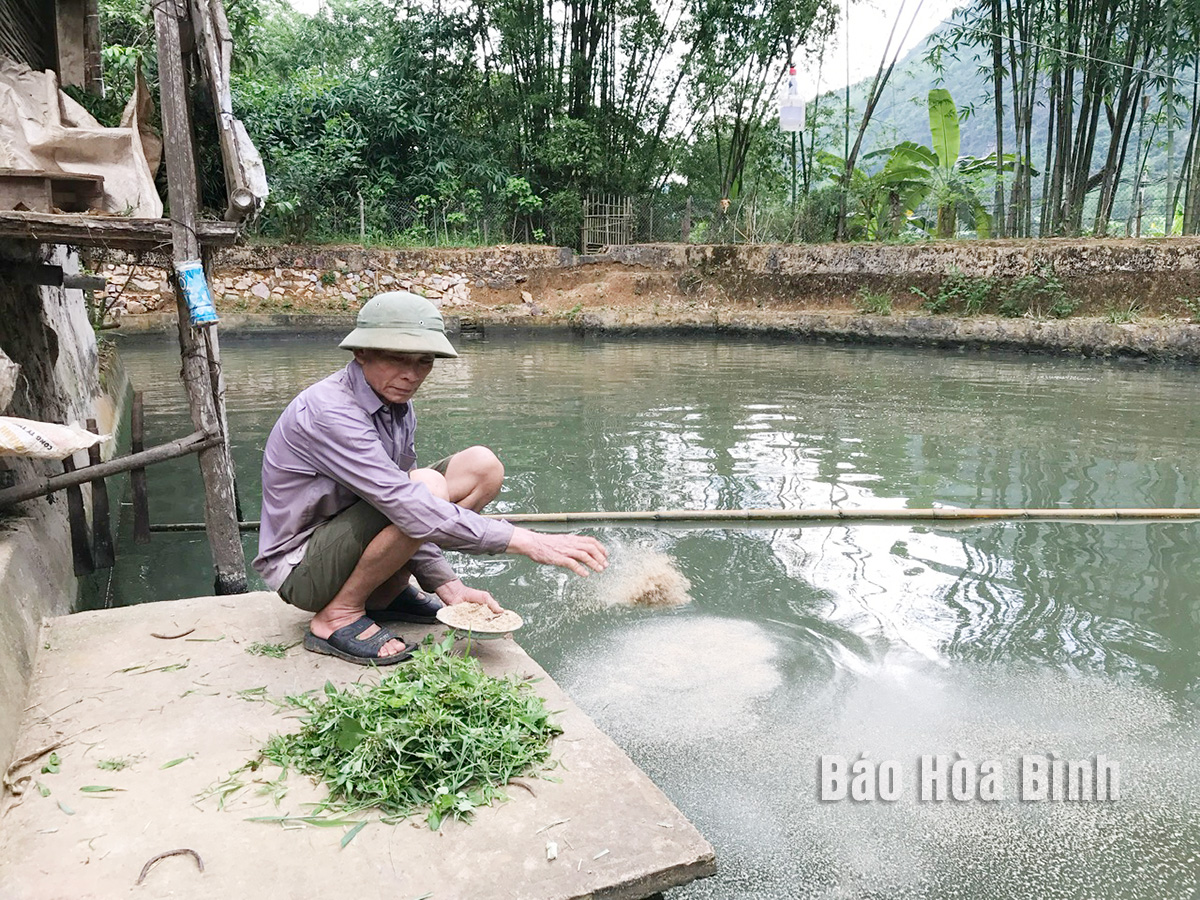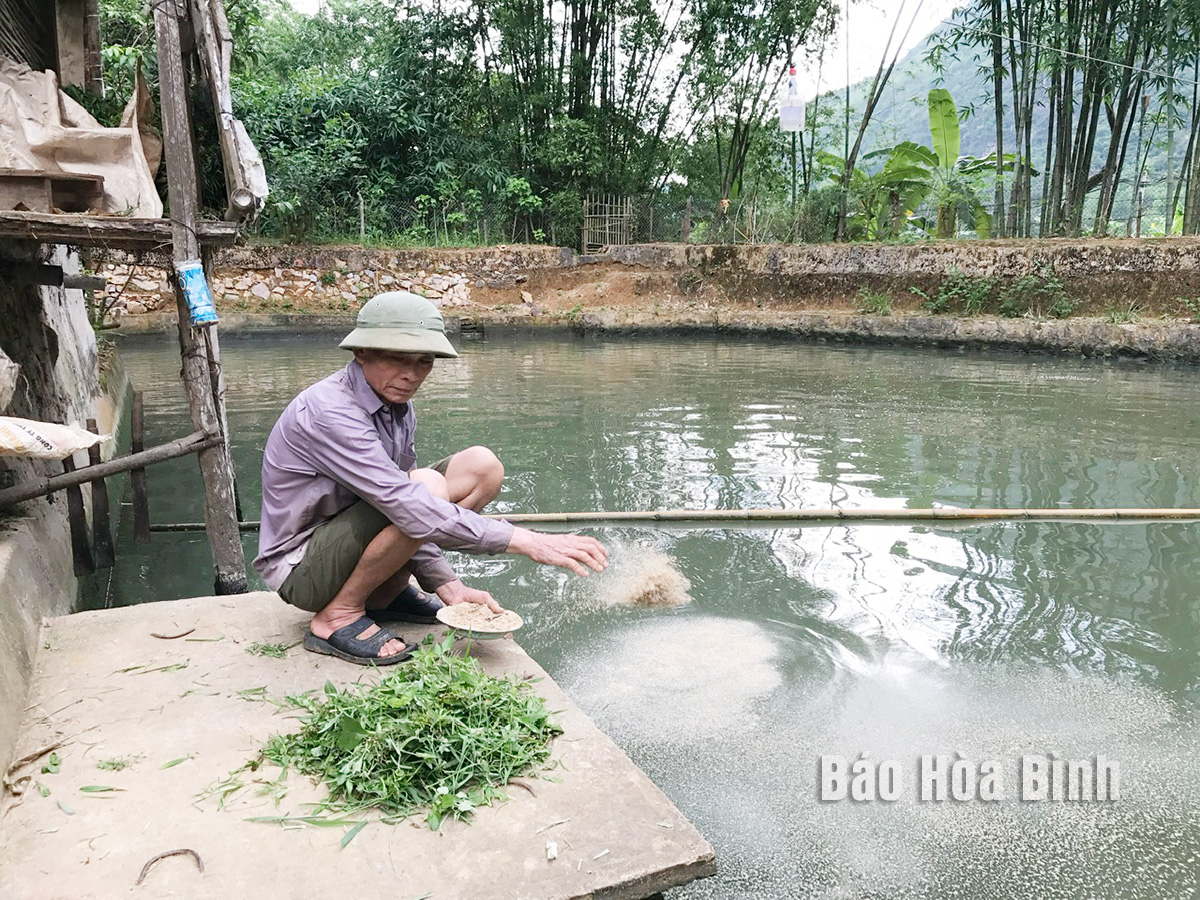
Referred to as fish that is offered to kings, Bangana lemassoni raised in Mai Chau district has gained a foothold in the market over the years due to its delicious flavour. Many restaurants feature dishes from this speciality on their menus, and merchants actively seek it out. Seeing the potential, residents in several communes in the district have maintained and expanded fish farming areas, making it a key product of the locality.
A Bangana lemassoni farm in Nghe hamlet of Van Mai
commune, Mai Chau district.
Kha Van Nhi, an experienced fish farmer in Nghe hamlet of Van Mai commune, said
that his family has been farming Bangana lemassoni for nearly 15 years, with a
700 sq.m pond dedicated to commercial production. This species adapts well to
local conditions and grows robustly.
Nhi said that his family runs four ponds, harvesting every three years with
each fish weighing between 1.5 to 2 kg and priced at 230,000 to 250,000 VND
(8.8–9.6 USD) per kg depending on weight. He reserves a pond for farming in
four to five years before selling fish, with prices reaching 300,000 VND per
kg. On average, the practice
generates an annual income of 80 million to 100 million VND for his family, he
added.
Given its economic value and effectiveness, theBangana lemassoni farming
has thrived in communes such as Van Mai, Mai Hich, and Mai Ha, covering nearly
35 ha. These communes are endowed with abundance of cool and clean groundwater
flowing from rocky hills, providing ideal conditions for the practice.
To make these products more accessible to consumers in the district and other
localities, the Mai Chau district People's Committee has allocated resources
and collaborated with the Science and Technology Application Centre under the
province’s Department of Science and Technology to successfully establish the
trademark for Mai Chau Bangana lemassoni, ensuring its recognition and position
in the market.
The Mai Chau fish have received positive response from consumers. Many diners
praise the fish for its rich flavour and quality, stating that although it is
farmed, its meat is just as firm as that of wild-caught ones. A key
characteristic of the fish is its slow growth and firm texture; the longer they
are raised, the tastier the meat becomes, resulting in higher prices. Some
farmers harvest after five years, yielding fish weighing between 3.5 to 5 kg,
priced at over 350,000 VND per kg.
To maintain quality and enhance the value of the fish while expanding farming
areas, local authorities are focusing on developing it into a key commodity.
Support programmes, including concessional loans, training classes, and
experience-sharing workshops, have been implemented to help farmers boost
production.
According to data from the Hoa Binh Provincial Party Committee, the industrial production index for the first six months of 2025 is estimated to have increased by 20% compared to the same period last year. This marks the highest year-on-year growth rate for this period since 2020.
In the first six months of 2025, Hoa Binh province’s export turnover was estimated at 1.145 billion USD, marking an 18.11% increase compared to the same period in 2024. Import turnover was estimated at $ 804 million, a 17.15% increase, which helped the province maintain a positive trade balance.
The lives of the ethnic minority farmers in Tan Lac district have gradually improved thanks to the new directions in agricultural production. This is a testament to the collective strength fostered through the professional associations and groups implemented by various levels of the district’s Farmers’ Union.
With the motto the "product quality comes first,” after nearly one year of establishment and operation, Muong village’s Clean Food Agricultural and Commercial Cooperative, located in Cau Hamlet, Hung Son Commune (Kim Boi district), has launched reputable, high-quality agricultural products to the market that are well-received by consumers. The products such as Muong village’s pork sausage, salt-cured chicken, and salt-cured pork hocks have gradually carved out a place in the market and they are on the path to obtaining the OCOP certification.
In the past, the phrase "bumper harvest, rock-bottom prices" was a familiar refrain for Vietnamese farmers engaged in fragmented, small-scale agriculture. But today, a new spirit is emerging across rural areas of Hoa Binh province - one of collaboration, organisation, and collective economic models that provide a stable foundation for production.
Maintaining growing area codes and packing facility codes in accordance with regulations is a mandatory requirement for agricultural products to be eligible for export. Recently, the Department of Agriculture and Environment of Hoa Binh province has intensified technical supervision of designated farming areas and packing facilities to safeguard the "green passport" that enables its products to access international markets.



